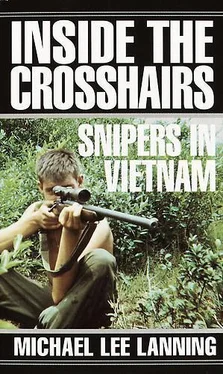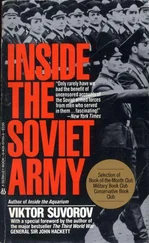“Like every newly assigned sniper, I began as the observer, searching for targets, spotting rounds, and providing security for the primary shooter. Due to lots of guys completing their tours, I moved up from observer to shooter after only a few weeks.
“My first mission as the senior team member came in November 1969. As soon as I got the order, I went to a makeshift firing range at the edge of the base and ‘doped,’ or zeroed, my weapon. I reconfirmed my zero with three or four shots and then packed up my rucksack for the mission. We snipers usually went pretty light in the field since we rarely stayed out more than five days to a week. I wore camouflage utilities made up of a pattern of shades of green, tan, and black along with a soft-brim boonie hat and the issue jungle boots.
“In addition to carrying my Remington 700, I strapped a .45-caliber Thompson submachine gun and extra magazines on my rucksack and had a standard M1911 .45-caliber pistol on my web gear. Some snipers carried only the pistol, but I liked the idea of having the Thompson if we got into any close-in fighting. We never planned on more than a few shots on each mission with the Remington, but I carried fifty of the 7.62-mm match-grade rounds—better too many than too few. Water, some C rations, weapons-cleaning gear, and a lightweight camouflage poncho liner rounded out my equipment load.
“My observer dressed the same and had about the same gear. Instead of a bolt rifle he carried an M14 or an M16 to provide more firepower. He also usually had a pair of binoculars and a Starlight scope [2] A Starlight scope is an electronic-image intensifier that uses reflected light from the stars or moon to identify targets. For additional information see Chapter 10 “Tools of the Trade: Arms and Equipment.”
for night observation that could also be mounted on the M14 for sniping after dark.
“My observer and I joined a grunt company of the 3rd Battalion north of Da Nang at Hill 190. We reported to the company commander, who, like all the field commanders, treated us real well. They seemed to like having a sniper team along. Of course, they knew we were assigned to the regimental headquarters and would return there after the mission.
“After we joined the company, the commander assigned us a radio operator and a security team for times we might be separated from the main force, like doing a ‘stay behind’ to see if anyone was following after the unit moved on. During movement we usually walked with the company command post in the center of the formation. In addition to ‘stay behinds’ we occasionally set up on a hillside and provided an overwatch of the company’s march.
“Since this was my first mission as a team leader, I really didn’t expect much to happen. However, only a few hours into the march, as we were advancing into what we called Elephant Valley, I heard the company commander order, ‘Sniper up!’ My observer and I quickly moved to the front of the company on the side of a gentle slope, where the point man directed our attention to five figures moving away from us at a distance of about 500 meters along a trail in the valley below. The company commander turned to me and said, ‘This is a free-fire zone. Those guys don’t belong here. Shoot if you want to.’
“Through my scope I could see the five were carrying heavy packs and wore a mixture of uniforms and civilian dress. I braced my rifle and squeezed off a shot. By the time I regained the sight picture I could see my target going down. I swung around to try to get another shot but the other gooks quickly melted into the surrounding jungle.
“We moved down the hill and found the body and a pack full of medical supplies and rice. One shot, one kill. Man, I was excited, completely exhilarated. It was like hitting a home run.
“Over the next few months I went out on many more missions with the infantry as well as doing some tower duty at various fire bases. Before the 26th Regiment withdrew from Vietnam the following March, I got three more confirmed kills for a total of four. I had five more unconfirmed, but unless we put a foot on the body or an officer could visually verify it, we did not claim a confirmed kill—even if there was a heavy blood trail.
“I think the enemy knew the regiment was getting ready to pull out, so activity was not all that great in our area. Some of the other snipers in my platoon had more kills, some less. A couple got wounded, but we did not lose a single sniper in the six months I was there. They were a great bunch of guys—a whole different breed, real professionals.”
Army and Marine snipers differed in their unit organization and in their individual weapons, but their general operational procedures were remarkably similar. Two-man sniper teams operated with infantry companies in the field or provided long-range firepower from various base camps and fire bases. Sniper teams also accompanied army long-range reconnaissance patrols (LRRPs) and Marine reconnaissance units. On occasion, with an infantry team of five to ten men to provide security and communications, they operated semi-independently. Still other snipers, especially in army units, returned to their companies after training, becoming unit snipers like their predecessors in World War II and the Korean conflict. [3] Motion pictures, novels, and even a few nonfiction books have portrayed Vietnam snipers routinely acting alone, without communications, and far from friendly lines. While good fiction, these stories are simply not true of actual sniper operations in Southeast Asia.
Snipers in Vietnam, like other Americans in the war zone, did not remain static in their tactics and methods of operations. They changed, modified, or invented whatever was necessary to successfully engage and destroy the enemy.
Marine Sergeant Ed Kugler, who served as a sniper with the 4th Regiment of the 3rd Marine Division for two years after his arrival in-country in March 1966, performed all the usual missions, including a confirmed kill at 1,300 meters from a fire base at Con Thien in the fall of 1966.
Kugler, from Lock Seventeen, Ohio, enlisted in the corps on June 18, 1964, and was wounded on April 30, 1965, in the Dominican Republic campaign. Kugler arrived at the replacement center at Da Nang in March 1966. There, an NCO from the recently established 3rd Marine Division Scout-Sniper School spoke to the replacements, soliciting volunteers. “He did the great sales job,” Kugler remembers, “and I bought it.” After three weeks of training, Kugler and his Winchester Model 70 and telescopic sight joined the 4th Marine Regiment Scout-Sniper Platoon.
For the next year Kugler worked with Marine companies in his regiment, performed sniper duties from platforms and ground positions at fire bases, and spent several months attached to the division’s Force Recon Company. By June 1967, Kugler, on a second-tour extension, was one of the most experienced snipers in his platoon. Tired of the typical sniper missions, Kugler had an idea for something different that he thought would produce better results.
Kugler and his chain of command convinced the regiment commander to permit the platoon to conduct semi-independent operations with teams composed entirely of snipers. Over the next six months, the special sniper teams, operating in groups as small as four and as large as eight, conducted missions organized around two shooters armed with scope-equipped bolt rifles. Other team members carried M14s in addition to at least one M79 grenade launcher and one M60 machine gun. They planned their missions carefully, coordinating with artillery and air support as well as with a regiment reaction company that stood ready to be airlifted to support the team or to secure its extraction.
Kugler’s sniper team used the radio call sign Rogues. He recalls, “We worked mostly out of Camp Evans and Hill 51 into the Co Bi Than Tan Valley, between Laos and the Ashau Valley. We would move onto a hillside and camouflage ourselves and then watch the valley below. We saw lots of small groups of VC and NVA. Most were minus a man or two after we took them under fire.
Читать дальше












